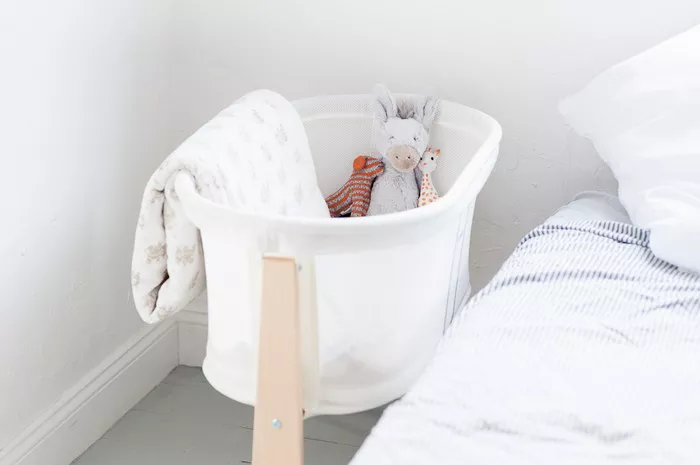In the realm of infant care, parents are constantly seeking products that provide comfort, safety, and peace of mind. Snuggle nests, also known as co-sleepers or infant loungers, have gained popularity as a versatile option for newborns to rest or sleep in close proximity to their caregivers. However, as with any infant product, questions arise about their safety and efficacy. In this comprehensive analysis, we delve into the research and considerations surrounding snuggle nests to answer the crucial question: Are snuggle nests safe for infants?
Understanding Snuggle Nests
Snuggle nests are portable, cushioned sleeping surfaces designed to mimic the cozy environment of a mother’s womb. They typically feature soft, padded sides that create a barrier around the baby, providing a sense of security. Many snuggle nests come with handles or straps for easy transport, making them convenient for use at home, during travel, or even as a place for supervised naps during the day.
These products offer a middle ground between traditional cribs and co-sleeping arrangements, allowing infants to sleep in close proximity to their parents while still having their own space. Snuggle nests are often marketed as versatile solutions for parents who wish to practice safe co-sleeping or bed-sharing while minimizing the risk of Sudden Infant Death Syndrome (SIDS) and promoting bonding between parent and child.
The Safety Debate: Potential Risks and Concerns
Despite their popularity, snuggle nests have sparked controversy within the medical community regarding their safety. Critics argue that these products may pose certain risks to infants, particularly when used unsafely or improperly.
One of the primary concerns is the risk of suffocation or positional asphyxia. Snuggle nests typically feature soft, plush materials that can pose a suffocation hazard if a baby rolls over onto their stomach or presses their face against the side of the nest. Additionally, the raised edges of some snuggle nests may increase the risk of a baby becoming trapped or wedged against the sides, potentially compromising their ability to breathe freely.
Another concern is overheating. The snug design of snuggle nests can lead to excessive heat retention, especially if they are used with additional blankets or bedding. Overheating is a known risk factor for SIDS and can increase the likelihood of other adverse outcomes, such as heat rash or dehydration.
Furthermore, there is the issue of proper positioning. Infants who sleep in snuggle nests may adopt unnatural or unsafe sleeping positions, such as with their necks flexed at an angle that obstructs their airway. This can increase the risk of respiratory problems or discomfort for the baby.
Navigating Safety Guidelines and Recommendations
In light of these concerns, various organizations and experts have issued guidelines and recommendations regarding the safe use of snuggle nests and similar products. These guidelines aim to minimize the risks associated with snuggle nests while maximizing their benefits for infant sleep and safety.
One of the most widely cited recommendations is the importance of using snuggle nests on a flat, firm surface. Placing a snuggle nest on a soft or uneven surface, such as a sofa or adult bed, increases the risk of suffocation and positional asphyxia. Additionally, parents should avoid using additional bedding or pillows inside the snuggle nest, as these can pose suffocation hazards and increase the risk of overheating.
Another key recommendation is to always place the snuggle nest in a safe sleep environment. This means avoiding exposure to tobacco smoke, keeping the baby’s sleeping area free from hazards such as loose cords or toys, and ensuring that the room is at a comfortable temperature to prevent overheating.
Additionally, parents should closely monitor their baby while they are sleeping in a snuggle nest. Regularly check to ensure that the baby is positioned safely and that their airway remains clear. If the baby shows signs of discomfort or distress while in the snuggle nest, it is important to promptly remove them and assess the situation.
Balancing Risks and Benefits: Making Informed Decisions
Ultimately, the decision to use a snuggle nest should be based on a thorough understanding of the potential risks and benefits, as well as a consideration of individual circumstances and preferences. While snuggle nests offer certain advantages, such as promoting bonding between parent and child and facilitating safe co-sleeping practices, they also carry inherent risks that cannot be ignored.
Parents should carefully weigh these factors and consider alternative sleep solutions that may offer similar benefits with fewer risks. For example, using a bassinet or crib with mesh sides can provide a safe and comfortable sleeping environment for infants while still allowing them to sleep in close proximity to their caregivers.
It is also essential for parents to stay informed about the latest safety recommendations and guidelines regarding infant sleep products. As new research emerges and safety standards evolve, staying up-to-date on best practices can help parents make informed decisions that prioritize the health and well-being of their child.
Conclusion
Snuggle nests can be a convenient and comforting option for parents seeking to create a cozy sleeping environment for their infants. However, it is crucial to approach their use with caution and awareness of the potential risks involved. By following safety guidelines, monitoring their baby closely, and staying informed about best practices, parents can help ensure that snuggle nests are used safely and effectively. Ultimately, the goal should always be to prioritize the safety and well-being of the infant, even as we seek to provide them with comfort and security.


